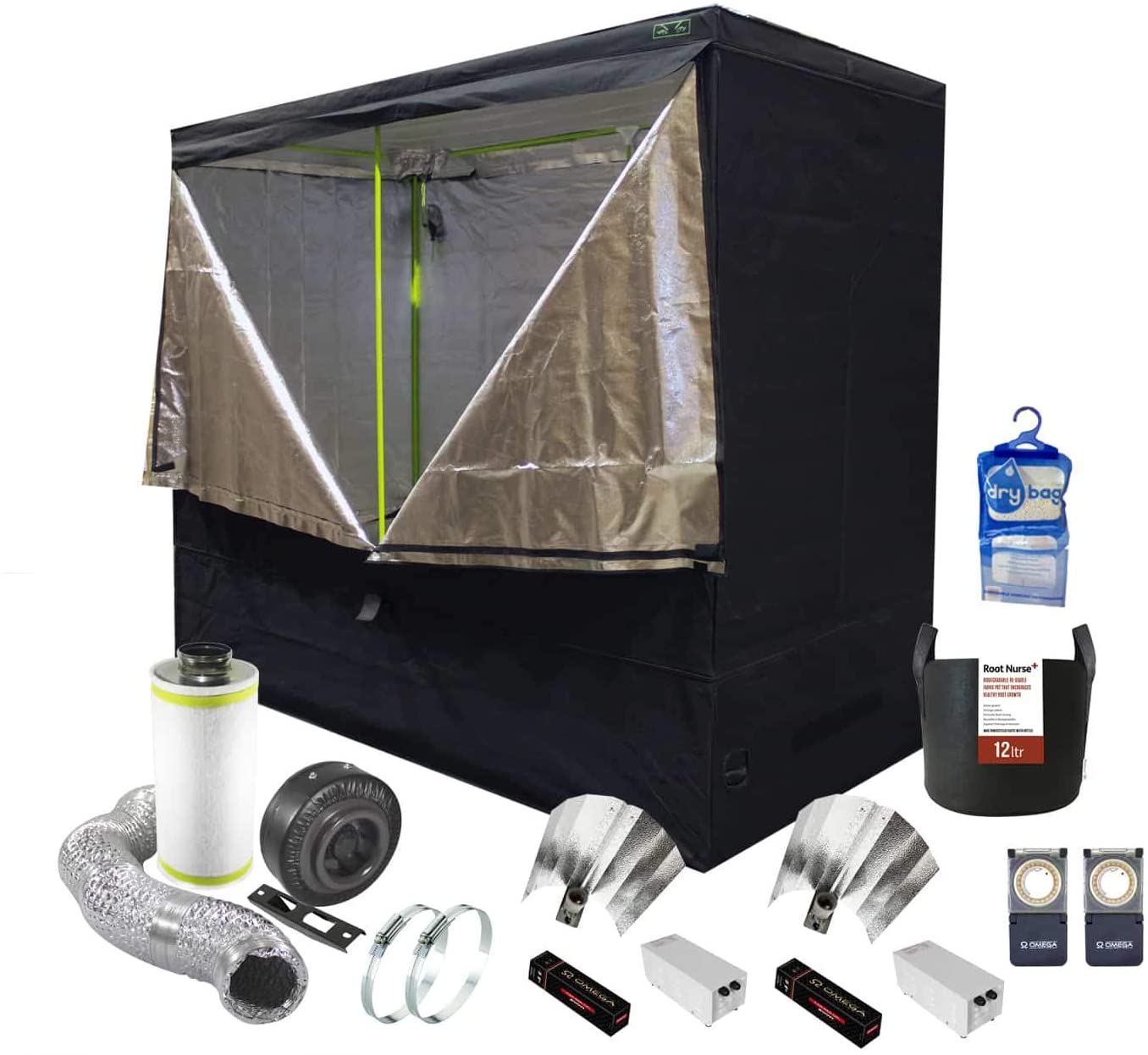How to Set Up a Grow Tent
Emporium Hydroponics • January 15, 2025
A simple step-by-step guide to get things growing!

Setting up a hydroponic grow tent involves several steps to ensure the optimal environment for plant growth. Here's a comprehensive guide to help you set up your own hydroponic grow tent:
1. Choose the Right Location
- Space: Select a room or area with ample space for your tent and easy access to power, water, and ventilation.
- Accessibility: Ensure that the location has a stable temperature and humidity level. Avoid placing the tent in areas with extreme temperatures or direct sunlight.
- Floor: Make sure the floor can handle water spills (consider a tarp or waterproof mat if needed).
2. Select a Grow Tent
- Size: Choose a tent that fits your available space and can accommodate the plants you plan to grow. Popular sizes for hydroponics are 100x100x200cm and 200x200x200cm
- Material: Ensure the tent is made of durable, lightproof, and reflective material (such as Mylar) to maximize the effectiveness of your grow lights.
3. Install the Grow Tent
- Assemble the Tent: Follow the manufacturer’s instructions for setting up the frame and attaching the tent’s fabric.
- Ventilation: Install intake and exhaust ports. You’ll need to have a way to bring in fresh air (intake) and expel hot air (exhaust) to maintain airflow and temperature.
4. Set Up the Hydroponic System
There are various types of hydroponic systems to choose from, including:
- Deep Water Culture (DWC): Plants' roots are submerged in a nutrient solution.
- Nutrient Film Technique (NFT): A thin film of nutrient solution is circulated over plant roots.
- Ebb and Flow (Flood and Drain): The growing medium is periodically flooded with nutrient solution and then drained.
- Wick System: Nutrients are drawn up into the growing medium by capillary action.
Steps for setting up the system:
- Position the hydroponic system (e.g., containers, grow trays, or channels) inside the tent.
- Connect the pump, reservoir, and plumbing according to the type of system you're using.
- Fill the system with a nutrient solution that provides the necessary nutrients for plant growth.
- Ensure proper drainage to avoid waterlogging or stagnant water in your system.
5. Install Grow Lights
- Type of Light: Choose appropriate grow lights for your plants. Common options include LED grow lights, fluorescent lights, or high-intensity discharge (HID) lights.
- Light Placement: Hang the grow lights using adjustable ratchet hangers so you can easily adjust their height as plants grow.
- Light Cycle: Set the lights to a timer (usually 18 hours on/6 hours off for vegetative growth, and 12 hours on/12 hours off for flowering).
6. Set Up Ventilation and Air Circulation
- Exhaust Fan: Install an exhaust fan to remove hot air from the tent. The fan should be strong enough to exchange air within the tent every 1-3 minutes.
- Carbon Filter: If odor control is needed, install a carbon filter on the exhaust fan to remove smells from the air.
- Intake Fan: If you don’t have passive intake, consider an intake fan to bring fresh air into the tent.
- Oscillating Fans: Place one or two oscillating fans inside the tent to help with air circulation and prevent mould.
7. Maintain Temperature and Humidity
- Temperature: The ideal temperature for most hydroponic plants is around 70-75°F (21-24°C) during the day and slightly cooler at night.
- Humidity: Keep humidity levels between 50-70%, depending on the plant stage. Humidity can be controlled with a humidifier or dehumidifier if necessary.
8. Monitor pH and Nutrient Levels
- pH Meter: Keep track of the pH levels of your nutrient solution, which should typically be between 5.5 and 6.5 for most hydroponic plants.
- EC Meter: Measure the electrical conductivity (EC) of your solution to monitor the concentration of dissolved nutrients.
9. Plant and Care for Your Crops
- Plant Seeds or Seedlings: Start with seeds or buy seedlings. Place them in the grow medium or net pots.
- Nutrient Solution: Regularly check the nutrient solution and replenish as necessary, adjusting the concentration as plants grow.
- Prune and Train: Prune your plants to remove any dead growth and help them grow efficiently. Training techniques like topping and low-stress training (LST) can also improve yields.
10. Monitor and Adjust the Environment
- Regularly check the lights, air circulation, temperature, humidity, nutrient levels, and pH to ensure your plants are getting everything they need.
- Adjust these factors as needed based on plant growth stages (vegetative or flowering).
Additional Tips:
- Cleanliness: Keep the grow tent clean to prevent pests and disease.
- Water Quality: Use filtered or distilled water to avoid mineral build-up in your hydroponic system.
By following these steps, you should be able to create an effective and productive hydroponic grow tent that provides the ideal conditions for your plants to thrive.

